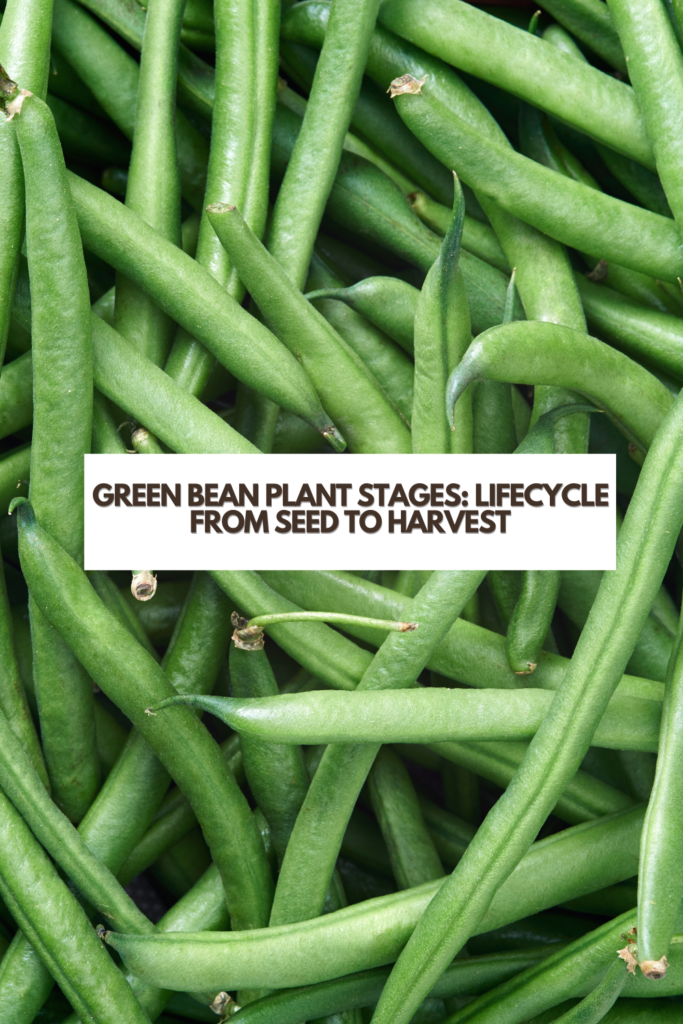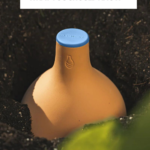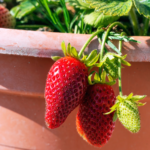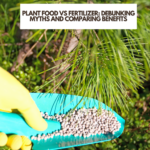Are you curious about the green bean plant stages? Understanding the life cycle of a green bean plant development is essential for successful cultivation.
We provide a guide through the life cycle of green beans, from planting to harvesting. This begins with selecting the appropriate variety for our climate and soil type and continues with planting the seeds at the proper depth and spacing. Proper knowledge of each developmental phase allows us to provide the right care at the right time, ensuring a healthy crop.
Green bean plants undergo several distinct growth stages that are important to recognize. The germination stage leads to the emergence of seedlings, which then transition into vegetative growth characterized by the formation of leaves and stems. As the plants mature, they enter the reproductive stage, developing flowers and pods.
FTC DISCLOSURE: Some of the links in this post are affiliate links. If you click on them and make a purchase, I will receive a small finder’s fee on the sale. This does not increase your price in any way shape or form. Using these links help support the continuation of this website. All opinions are my own. Thank you in advance.
By observing these stages, we can manage the plants’ needs for water, nutrients, and support.
For the final step, we must identify the signs of maturity to determine the optimal time for harvesting the beans in your vegetable gardens.
Key Takeaways
- Green bean plants progress through a series of developmental stages from planting to harvest.
- Recognizing each stage is crucial for providing appropriate care and maximizing yield.
- Timely harvesting is important for the quality and flavor of green beans.
Planting Green Beans
To ensure a successful green bean harvest, we pay close attention to various aspects of planting, from selecting the right variety to managing pests and diseases, ensuring our crop thrives.
Selecting Varieties
When we select green bean varieties, we consider bush-type green beans for compact spaces and pole-type beans for vertical growth. Bush beans mature quickly, while pole beans produce over a longer period. We aim for varieties resilient to our local conditions. The green bean family is vast.
Soil Preparation
We prepare the soil by mixing in compost to create a rich, well-drained environment. The organic matter improves soil structure and fertility. We ensure the texture is fine and firm to support seedling growth.
Choosing Planting Time
We monitor the temperature closely, planting our green beans in spring once the danger of frost has passed. Soil temperature should be at least 50°F, optimally near 60°F, for best germination.
Sowing Seeds
For sowing, we place the seeds about 1 inch deep and 2 inches apart in rows. Pole beans require wider spacing or a pattern that accommodates the vines. We always keep the soil firm over the seeds.
Watering and Sunlight Requirements
After planting seeds, we provide consistent water to maintain moisture without waterlogging. Green bean plants need full sun, so we ensure at least 6 hours of sunlight daily for robust growth.
Support Structures
For pole beans, we install support structures like trellises at planting. It encourages vines to climb, promoting better air circulation and reducing disease risk. Bush beans do not require support.
Fertilization and Soil Health
While green beans aren’t heavy feeders, we apply a balanced fertilizer sparingly at planting and periodically throughout growth. We focus on maintaining soil quality with regular inputs of organic matter.
Frost Management
We remain vigilant about the forecasted frost dates. If an unexpected frost threatens, we protect our young plants with coverings to shield them from damage.
Pest and Disease Control
We monitor for pests such as aphids, Mexican bean beetles, and Japanese beetles, as well as fungal diseases. Organic insecticides and good cultural practices help us manage these challenges effectively.
Germination to Seedlings
From the moment a green bean seed is sown, its journey from germination to the seedling stage is a carefully orchestrated process, governed by temperature and moisture levels. Let’s explore these critical early stages of a green bean plant’s life.
Germination Process
We can define germination as the phase during which the green bean seed awakens from dormancy and begins to sprout. For successful germination, the ideal soil temperature should be between 70 to 80 degrees Fahrenheit. The seed absorbs water, which triggers the embryo within to grow and eventually break through the seed coat.
- Temperature & Moisture:
- Optimal Conditions: 70-80°F
- Water Uptake: Essential for initiating germination
- Embryo Activation:
- Seed Coat Break: The first sign of germination
- Primary Root Emerge: Marks the beginning of the root system
Growth of Cotyledons
Once the seed coat splits, we observe the emergence of cotyledons. These are the first leaves that appear from the seed and are usually not true leaves. Instead, they serve as food stores for the seedling, providing necessary energy for growth until the plant can begin photosynthesis.
- Cotyledons’ Role:
- Energy Provision: Sustain the seedling initially
- First Green Structure: Visible sign of a healthy seedling
Development of True Leaves
The development of true leaves is a significant milestone in the life of a green bean seedling. These little leaves are the first to possess the full capacity to perform photosynthesis, a vital process for the plant’s growth. True leaves will have a different appearance than cotyledons, often being larger and more complex in structure.
- Photosynthesis Initiation:
- True Leaves: Begin the process of photosynthesis
- Growth Impact: A vital step for the seedling’s independence
Root System Expansion
After germination, the primary root, or radicle, is the first part to emerge from the seed. As the green bean seedling develops, we witness the root system’s expansion, anchoring the plant and absorbing water and nutrients from the soil.
- Root Growth:
- Primary Root: The first stage of root system development
- Root System Expansion: Increases stability and nutrient uptake
Each of these subsections together outlines the transformation from a dormant seed to a growing green bean seedling, ready to continue its journey towards full maturity.
Vegetative Growth
In this phase, we observe rapid growth of stems and leaves, which is critical for the structure and energy production of green bean plants.
Stem and Leaf Development
The vegetative stage initiates with stem elongation. Our green bean plants, whether bush or pole varieties, develop a central stem. In bush beans, the stem remains compact, while in pole beans, the stem lengthens into a vine that requires support.
We also note the emergence of leaves, which are crucial for photosynthesis. Leaves unfurl from the stem nodes and increase in number and size, forming the foliage of the plant.
Formation of Bean Plant Structure
Our green bean plants’ structure depends on their type. Bush beans form a bushy shape, with multiple stems growing from the base, and typically do not require support. On the other hand, pole beans grow as a vine and need a trellis or stakes to climb.
The architecture of these plants influences their space requirements in gardens. Additionally, the formation of secondary stems can occur, contributing to a fuller plant structure which is very efficient for space in gardens.
Nutrient Uptake and Photosynthesis
The vegetative growth stage heavily relies on nutrient uptake from the soil. Our plants absorb essential nutrients, including nitrogen, phosphorus, and potassium, which are necessary for their growth and development. These nutrients, along with water absorbed by the roots and sunlight captured by the leaves, fuel the process of photosynthesis.
During photosynthesis, green bean plants convert sunlight into chemical energy, producing glucose and oxygen, which are indispensable for their growth and the enhancement of their vegetative state.
Reproductive Stage
The reproductive stage in green bean plants marks the transition from vegetative growth to the production of flowers and pods. In this crucial phase, successful pollination and fertilization lead to the formation of mature green beans.
Flower Emergence
Our green bean plants enter a critical phase with the emergence of flowers. These blossoms are typically white and grow in clusters. Full sun is essential for the healthiest flower production, as it supports the most vigorous growth. Under the right conditions, we usually see flowering within a few weeks after the plants sprout.
Pod Formation
Once the flowers bloom, pod formation begins. Green bean pods start as tiny green bulges at the base of the flowers, swelling and elongating as they mature. For optimal development, the green bean pods require continued exposure to full sun and consistent moisture.
Pollination and Fertilization
Pollination is the transfer of pollen from the male parts to the female parts of flowers. In green beans, this can happen through self-pollination or with the aid of pollinators such as bees and other insects. Fertilization occurs when the pollen successfully fertilizes the ovary, leading to the formation of seeds inside the pods.
This marks the beginning of the green bean pods’ growth and maturation. Ensuring a garden has a healthy pollinator population or is conducive to wind pollination helps guarantee a good crop.
Maturity and Harvesting
As green bean plants reach maturity, we focus on recognizing the signs that the beans are ready to harvest, employing effective techniques to gather the crop, strategies to maximize yield, and best practices for handling post-harvest.
Signs of Maturity
Green bean pods signal their readiness when they become firm and are bulging with the seeds inside. At this stage, the beans inside have reached their full size but are not yet dry or hard.
Typically, the pods are 3 to 4 inches long and have a vibrant green color. We check for these signs before deciding the exact time to begin harvesting.
- Pod Appearance: Firm, bulging, and vibrant green.
- Pod Length: Generally 3 to 4 inches.
Harvesting Techniques
To harvest green beans, we use a method that prevents damaging the plant. We hold the stem with one hand and the pod with the other, gently pulling to detach the beans.
For snap beans, the technique involves a sharp snap motion to cleanly remove the pod without tearing the plant. It is vital that we harvest regularly to encourage further production.
- Hold and Pull: Gently detach the pod without damaging the plant.
- Snap Technique: A sharp snap for clean removal.
Optimizing Yield
To maximize the yield of our green bean plants, we implement frequent harvesting. The more we pick, the more the beans grow. This strategy involves picking beans every couple of days, which encourages a bountiful harvest.
Timing is crucial; we need to harvest before the pods become overgrown and tough.
- Frequent Harvesting: Enhances plant productivity.
- Timely Picking: Avoid overgrown, tough pods.
Post-Harvest Handling
Once beans are harvested, we prioritize the proper handling and storage to maintain freshness. We cool the beans quickly to retard spoilage and preserve their crisp texture. Handling should be gentle to avoid bruising.
For storage, we keep the beans in a cool, moist environment with appropriate ventilation to extend their shelf life.
- Rapid Cooling: Maintain freshness and crispness.
- Gentle Handling: Prevent bruising.
- Proper Storage: Cool, moist conditions with ventilation.
Lifecycle Overview and Cultivation Tips
In this section, we’ll explain the key stages of the green bean plant’s lifecycle and share essential cultivation tips for a successful harvest.
Annual Growth Cycle
Green bean plants are part of the legume family and are categorized as annual plants, completing their life cycle within a single growing season. Here are the various growth stages of a single green bean seed.
The cycle begins with germination, usually a week after planting, when the soil temperature reaches about 70°F. After developing true leaves, the plants enter a rapid vegetative growth phase. By mid-summer, they start flowering, which then leads to pod development.
Harvest can take place from late summer into early fall, as soon as the pods are firm and have reached full size.
Germination: 7-10 days post-planting at soil temperature of 70°F
Vegetative Growth: Rapid expansion of leaves
Flowering: Mid-summer phase, leads to pod formation
Harvest: Late summer to early fall
Plant Succession Planning
To ensure a continuous harvest, we recommend practicing succession planting. Start by sowing seeds every two weeks to extend the productive period of your garden. Remember, green beans thrive in well-drained soil and require full sunlight. When growing in containers or pots, choose bush beans or half-runners for their compact growth habit.
- Initial Sowing: At the last frost date
- Subsequent Sowings: Every two weeks
- Containers: Prefer bush beans and half-runners
Common Varieties and Their Traits
Bush Beans: These varieties, such as ‘Blue Lake’ and ‘Contender’, are compact and do not require staking. They tend to mature earlier and can be harvested all at once.
Pole Beans: Varieties like ‘Kentucky Wonder’ are vining plants that grow tall and require support. They produce beans over a longer period and are ideal for small gardens where vertical space can be utilized.
- Bush Beans: Early maturing, compact
- Pole Beans: Long bearing, require support
Problem-Solving in Green Bean Growing
Common issues when growing green beans include pests, weeds, and fungal diseases. To combat these, maintain clean garden beds with proper mulching and regular pruning to improve air circulation.
Utilize companion planting to deter pests, and avoid overhead watering to prevent the spread of fungi. It’s essential to monitor the plants regularly for early detection and control.
- Pests: Use companion planting as a deterrent
- Weeds: Mulch to suppress weed growth
- Diseases: Prune for air circulation; water at the base
Advanced Techniques for Home Gardeners
For those looking to elevate their green bean growing, consider soil amendments and the precise timing of planting to optimize growth conditions. To conserve space, train vining varieties on trellises or other vertical structures.
Experiment with intercropping green beans with faster-growing vegetables to maximize garden productivity. And, to enhance the season, use row covers to extend it at both ends.
Soil Amendment: Adjust soil components based on nutrient tests
Vertical Growth: Train vining beans on trellises
Intercropping: Plant with faster-growing vegetables
Season Extension: Utilize row covers for early and late season protection
Environmental Impact and Sustainability
In growing green bean plants, we must consider the impact on the environment and the sustainability of our practices. Our focus on climate adaptation, organic methods, and biodiversity protection ensures that we are contributing positively to our ecosystem.
Climate Considerations
Temperature plays a critical role in the cultivation of green bean plants. To thrive, these plants require direct sunlight and well-drained soil. We acknowledge that in warmer climates, additional measures such as providing shade during the hottest parts of the day can protect the plants and conserve water.
- Optimal Temperature Range: 70°F to 85°F (21°C to 29°C)
- Soil Requirements: Light, sandy, and well-draining
Organic Cultivation Methods
We prioritize organic cultivation methods to maintain sustainable gardens. By integrating compost and organic matter into the soil, we enhance the soil’s health and reduce the need for synthetic fertilizers.
- Compost Utilization: Boosting nutrient content and soil structure
- Organic Matter Contribution: Improving water retention and root health
Enhancing Biodiversity
Sustainable agriculture, including the growth of green bean plants, often aims to enhance biodiversity. We encourage gardeners to plant a variety of flora to attract and support pollinators, which are vital for the health of our gardens.
- Diversity in Planting: Attracting a range of pollinators
- Gardener Practices: Using organic pesticides to protect biodiversity
Through these practices, we ensure that our green bean plant cultivation is both environmentally responsible and sustainable.
Green Bean Varieties and Usage
Green bean varieties come in many forms, each with distinct growing habits and culinary uses. In our kitchens and gardens, understanding these differences enhances our cooking and preserving techniques.
Comparing Bush and Pole Beans
Bush beans, forming a thick bush about 2 feet tall, are known for their ease of growth and tend to mature all at once. This makes them ideal for those who favor a large, single harvest.
On the other hand, pole beans are vining plants that require support and grow up to 6 feet or more. They produce beans over a longer period, which can be perfect for continuous harvesting.
- Bush Beans: Compact growth, simultaneous maturation
- Pole Beans: Vining nature, staggered harvesting
Culinary Profiles
We distinguish between green bean varieties not just by their growth habits but also by the texture and flavor they bring to recipes. Snap beans, a common type of Phaseolus vulgaris, are prized for their snappy texture and are versatile in cooking.
- Snap Beans:Crisp texture, preferred for:
- Salads: Requires snappy, fresh beans
- Sautéing: Preserves the firm texture
- Steaming: Enhances natural flavor
Preservation and Storage Methods
Our choices in preserving green beans impact their texture and taste. Canning preserves beans for a long time but can soften their texture. Freezing, however, retains the snappy quality we often desire. Proper storage extends the shelf life and maintains the quality of the beans.
- Canning: Long-term preservation, softer texture
- Freezing: Maintains snappiness, short to medium-term storage
By choosing the appropriate variety, and tailoring our cooking and preservation methods to that variety, we can fully appreciate the rich array of green beans in our culinary endeavors.
Resources and Further Reading
When considering resources for learning about green bean plant stages, we suggest consulting a mix of guides and gardening books for comprehensive insight. Below, we present a curated list to enhance your understanding:
Books:
- The Vegetable Gardener’s Bible by Edward C. Smith: A classic for home gardeners with detailed profiles on a variety of vegetables, including green beans.
- How to Grow More Vegetables by John Jeavons: Emphasizes sustainable methods and provides information on the life cycle of plants.
Online Guides:
- University of Minnesota Extension: Reliable information on green bean cultivation can be found in their gardening section.
- National Gardening Association’s Plant Care Guides: A resource with specific advice on green bean care through each stage of growth.
Websites for Further Exploration:
- GardeningKnowHow.com: Offers practical tips and guides for all levels of gardeners on various plants.
- Almanac.com: Their ‘Planting Calendar’ is an invaluable tool to determine the best time to plant green beans depending on your local climate.
For first-hand learning, we also recommend visiting local nurseries or botanical gardens, as they often have experts who can provide tailored advice on green bean cultivation in your region. Remember, gardening is a hands-on experience, and these resources will serve as guides, but the real knowledge comes from observing and tending to your plants throughout their life stages.














